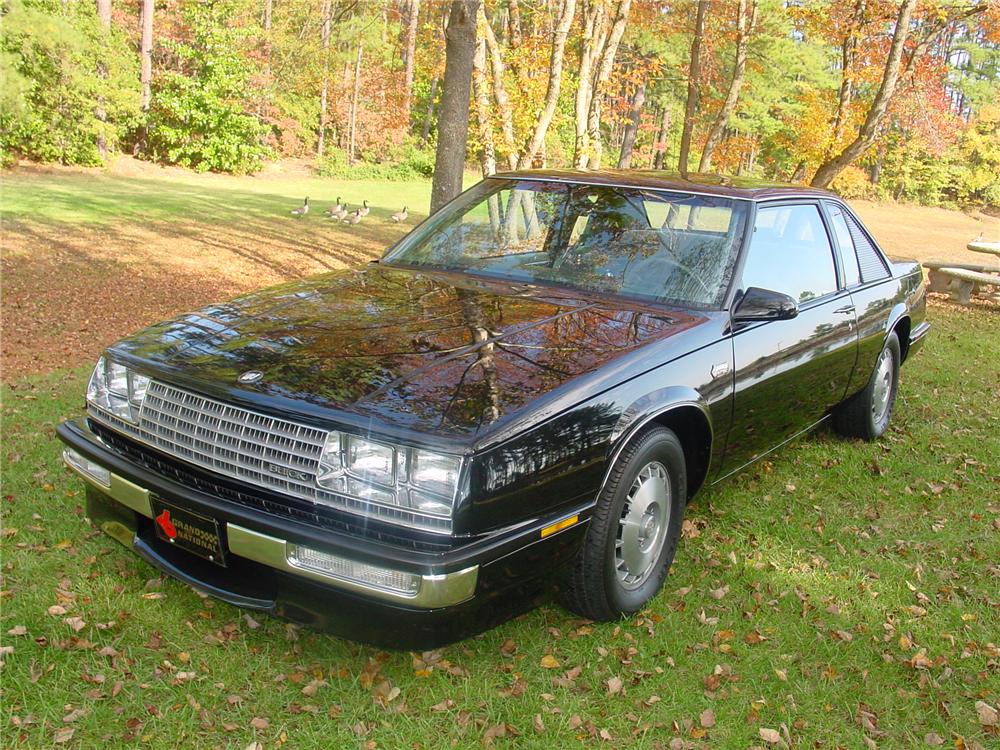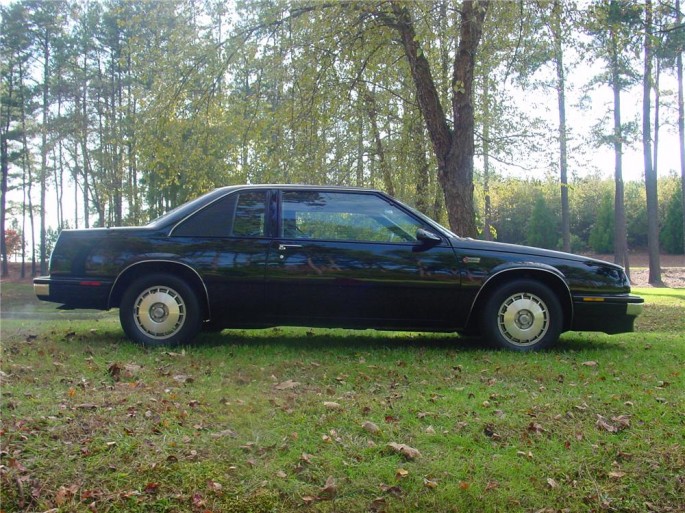If you look at Buick in the mid-to-late 1980s you start to see two warring factions within the division: the traditionalists that wanted to keep Buicks comfortable cruisers that were better as selling to an increasingly aged audience, and another that had recently embraced the newfound performance streak that engineers had stumbled upon with the turbocharged V6 program. The Regal T-Type and Grand National were impressive out of the box and with a few tweaks, being two cylinders down in a race suddenly wasn’t as much of a downfall as it used to be…in fact, most of the time a good tuner could turn the tables and run down whatever they felt like. But the G-body platform wasn’t the only vehicle that they were investigating. It was quickly becoming apparent that front-wheel-drive was coming whether or not anybody liked it.
Enter the LeSabre. Having made the move to the front-wheel-drive H-platform for 1986, Buick engineers targeted it as the first front-wheel-drive performance effort, mostly because the 3.8L V6 was virtually identical to the motor in the Regal. With word coming down the pipeline that the rear-wheel-drive G-body was going away for 1987, it was decided that the LeSabre was going to be the next Buick body for NASCAR, but there was one issue: the big back quarter window wasn’t desired for one reason or another (the exact reason isn’t clear), so a small batch of LeSabres (somewhere between 112-117 vehicles) were slated for the Grand National treatment. The most obvious change the WE2 package added, in addition to the black exterior and gray interior, was a modified rear quarter glass treatment that used a shortened piece of quarter glass from a Regal and a window plug to fill in the rest. Originally planned to be turbocharged, GM ran into a problem when the turbo motors turned every THM-440T4 automatic they were attached to into dust.
The Grand National program for the LeSabre was not pursued after the initial batch of cars came out, and instead the LeSabre T-type became the performance FWD Buick. Improved aero, special blackout trim, a different interior with full gauges and a floor shifter, and a seriously upgraded suspension system turned the otherwise milquetoast Buick into a respectable coupe. The LeSabre T-type lasted through 1990 before Buick’s brass put their foot down and ended the hot-rodding uprising for good, re-positioning the brand as a maker of “premium American automobiles”.
While the performance stock isn’t anything to mention, the LQ4 supercharged V6 and 4T65-E transmission are easy swaps and would certainly make either the Grand National or T-Type LeSabre a screamer, finding one is difficult. The T-Type cars have a cult following and the Grand Nationals are rare. And if you find a red LeSabre with Grand National badges, and it’s for sale, buy it…there’s only one, it’s documented and it’s a factory mistake.
After 1990, Buick’s models were beige mobiles that were best suited to AARP members and bingo halls, but before then the internal war between the soft and padded crowd and the gear heads was in full swing and it was cars like the LeSabre Grand National that showed that there were some wins. Just picture how different things would be if the performance guys had won.





























These were definately better looking than the first FWD Regals and are pretty neat cars. Those jackasses still sjould not have stopped building G bodies though.
http://chicago.craigslist.org/wcl/cto/4890248106.html
Is this the one that should not exist?
http://www.ebay.com/itm/Buick-LeSabre-T-Type-1989-buick-lesabre-t-type-3-8-l-/181662490179?forcerrptr=true&hash=item2a4bed9e43&item=181662490179&pt=US_Cars_Trucks
Minor correction, the Supercharged 3.8/3800 has always been RPO L67 for both Series I and II. Series III is an L32.
Yes the swap is not terribly challenging, especially a Series I L67.
I worked for Buick back then. The original batch of LeSabre Grand Nationals were shipped to Daytona and for a dealer dirve-away promotion. All of the cars did a parade lap and I drove Robert Stemple, GM Exec VP and his wife all weeked and on the parade lap.If I remember correctly Mr. Stemple was the Grand Marshall that year.
Beige mobiles, he he he…………..
Looks like a Lumina to me…..
Wow, did you realize there was also a Riviera T-Type?
I always liked the LeSabre T Type for some reason. Reading this article had me hit CL and I found this:
http://saginaw.craigslist.org/ctd/4847970973.html
Had a standard version of these as a college commuter to give my wallet a rest from my 66 galaxies milage, or lack thereof. Any way, I loved it 3.8 had plenty of beans and the car was a living room on wheels. The reverse hood was an awesome surprise to other car guys when checking fluids at a gas stations. And it was near invisible to cops damn I loved that car! One day she committed suicide by some how slingshot in the alternator through the water pump and into the radiator. Coasted into a dealership and rolled out a 95 Grand Prix coupe. Another greatly underrated car.
Gm also put a turbo on a 80 monty carlo as well
“Just picture how different things would be if the performance guys had won.”
I’d imagine the Reatta would have been mid engined with a stick shift, for one thing. That would have been a lot more interesting, and probably sold better.
When doing swaps using the 4T65E make sure if your going to use a turbo or supercharger you use a tranny out of an already turbo or supercharge car. They have a stronger differential to handle the power and a lower gear ratio (34 tooth sun gear). That’s probably why the 440-T4 kept blowing up.
So were the T-Type cars even turbo charged in the end? The way I read to article, they are not? that’s really disappointing…
Nope, and the reason is because GM has never managed to have a FWD transaxle that could hold up the power. The THM-440 died behind the 3.8 then, the 4T65-E dies behind the LS4 5.3 in the FWD V8 W-bodies. Mostly, it was an appearance package. Buick didn’t start supercharging the 3.8 FWD setup until 1997.
The first supercharged 3800’s appeared in 1992
To Bryan the author, one correction. 1989 was the last year for the Lesabre T-Type, not 1990 as written in the article above. I have an `89, one of 5,389 built.
It was the Electra T-Type that had it’s final year in 1990.
(Wasn’t sure you’d see this if it wasn’t a Reply.)
To Bryan the author, one correction. 1989 was the last year for the Lesabre T-Type, not 1990 as written in the article above. I have an `89, one of 5,389 built.
It was the Electra T-Type that had it’s final year in 1990.